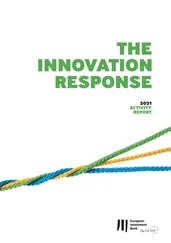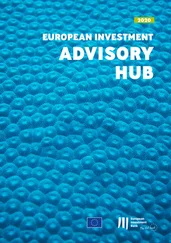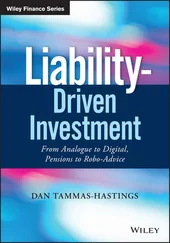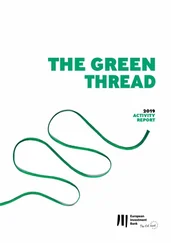A series of monetary, fiscal and prudential policy measures have supported the supply of bank credit. Central banks have lowered refinancing rates, in the ECB’s case to as low -1% for banks that increase their lending to the real economy (ECB, 2020a). In addition, fiscal policy measures have reduced the credit risk associated with lending to businesses, for example by injecting equity, providing loan guarantees, and supplying liquidity to firms via tax deferrals and wage subsidies (see IMF, 2020a, for an overview). By June 2020, banks had granted COVID-19-related payment moratoriums amounting to 7.5% of their outstanding loans to households and companies in the European Union. Public guarantees covered new lending amounting to 1.6% of outstanding loans to households and companies (European Banking Authority, 2020).
Prudential policy measures were introduced to alleviate banks’ concerns that risky lending to businesses would erode the buffers they hold over regulatory capital and liquidity requirements (for an overview of the measures, see for instance International Institute of Finance, 2020). Several supervisors have lowered requirements that were designed explicitly to be relaxed in downturns (Drehmann et al., 2020). For example, Sweden lowered the countercyclical capital buffer requirement by 2.5 percentage points of risk-weighted assets to zero. Many other countries had less scope for such large reductions as their countercyclical buffers were smaller at the outset of the crisis (ESRB, 2020). In addition, the implementation of some new requirements was delayed. For example, banks were effectively allowed to postpone holding capital against expected but not-yet-incurred credit losses (Ehrentraud and Zamil, 2020). Here, the concern was that banks with high, perhaps overly pessimistic, estimates of COVID-related credit losses would curtail their lending if they had to set aside more capital to cover expected losses. At the same time, supervisors have encouraged banks to build their capital buffers by retaining a greater share of their earnings (ECB, 2020b).
While these measures support the supply of bank credit and reduce defaults in the near term, loan losses are likely to mount in the medium term. First, loans typically take a couple of years to turn sour after the start of a recession. Second, most fiscal and prudential policy relief programmes are set to expire within the next few years. Third, the bulk of fiscal support has been granted in the form of debt, not equity. Loans provide liquidity but increase corporate leverage. Once loan guarantees expire, many firms will therefore pose a higher credit risk than before the crisis. Accordingly, recent surveys show that banks, on balance, are seeing loans to firms as more risky, and that banks are becoming more risk averse (ECB, 2020c).
Figure E.1
NPLs and GDP growth by region in the aftermath of the global financial crisis

Source: World Bank and EIB staff calculations.
Following the first lockdown, aggregate credit losses may ultimately amount to 5-10% of banks’ exposures. One approach for estimating eventual credit losses relies on past correlations between GDP and non-performing loans, ignoring the support measures granted so far. This analysis suggests that non-performing loans to households and firms could have doubled from 2019 to about 7% of bank loans in 2020. This estimate is based on a panel regression of changes in euro area bank non-performing loans on output gaps. According to the estimate, non-performing loans rise by 0.6 percentage points if the output gap increases by 1 percentage point. That said, non-performing loans may increase later, or remain below what past trends suggest because of the scale of fiscal and monetary policy measures. If the recovery resumes soon, viable firms might be able to restart their activity, while the weight of losses will not only be carried by banks but also by governments that provided guarantees. Another approach for estimating credit losses is to infer default likelihoods from the value and the volatility of listed firms’ share prices. This estimate reflects the impact of support measures, but loss estimates depend heavily on the model used and its calibration. Using corporate equity prices as of April 2020, Reinders et al. (2020) estimate, for example, that corporate loan losses could equal 5% of banks’ corporate exposure.
If the crisis lasts longer, however, the stimulating effect of support measures on bank credit may vanish and additional risks might arise. In these programmes, sovereign nations are effectively sharing their lower credit risk with the corporate and banking sectors. But sovereign risk itself is rising as governments’ explicit and implicit liabilities are mounting. Sovereigns might themselves be dragged down by banking and corporate sector debt. This situation has proven explosive for highly indebted economies in the past, resulting in deep recessions and prolonged deteriorations in bank loan books. Figure D.1shows that non-performing loans rose by significantly and for longer periods in places where sovereign-bank spirals developed.
If the pandemic lasts too long and triggers a major deterioration of bank asset quality, bad banks could be created to take over the non-performing loans, which could help the recovery.
Fortunately, banks are in a better position to absorb losses than at the outset of the 2007-2009 financial crisis. Bank capital levels have increased, and a great deal of effort has gone into reducing non-performing loans back to their 2007 level (European Commission, 2019).
Conclusion and policy implications
The government restrictions to contain the spread of the coronavirus pandemic are having a significant negative impact on the global economy.As the pandemic spread rapidly across the globe, many governments, especially in advanced economies, took drastic measures to contain the virus that severely constrained domestic economic activity and international trade. While most economies were bouncing back after the removal of the measures, concerns were rising of longer-term economic effects. Those concerns were intensified by the second wave of infections that washed over Europe in the fourth quarter of 2020.
The policy measures put in place have been expansive enough to contain the economic damage caused by severe government restrictions across the European Union.National governments, national central banks, the ECB and the European Union have rapidly mobilised resources to counteract the effect of restrictions on movement and social distancing. Fiscal and monetary policymakers, as well as financial supervisors, acted in coordination to mitigate the effects on firms, banks and employees. Most of these measures, however, were designed as an emergency response and were intended to be temporary. Removing them too soon might quickly prove devastating as a second wave of infections hit most EU members in the fourth quarter. At the same time, the policy measures’ bluntness and expansive use of resources suggest that they may not be sustained in full for much longer.
The symmetry and intensity of the shock is pushing EU members to substantially strengthen common economic policy.The EU policy response to the pandemic is impressive both in its size and speed of delivery. Several indicators show that the policy response was well received by markets and strengthened confidence in the future of the European Union. Progressing swiftly and delivering on expectations remains key. The rapid economic rebound in the third quarter shows how successful the policy response to the first lockdown was. If anything, the second virus wave is a strong argument for maintaining the policy measures over a longer-term horizon, until a vaccine is widely distributed. When this happens, support may be recalibrated to reduce possible long-term side-effects, but the overriding concern should be to preserve the ecosystem as it was before the pandemic.
Читать дальше













